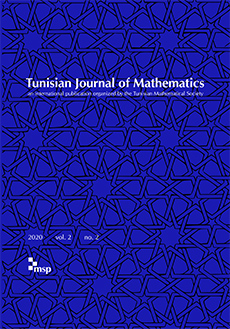Abstract
Let and be two Hermitian matrices. Assume that the eigenvalues of are known, as well as the eigenvalues of . What can be said about the eigenvalues of the sum ? This is Horn’s problem. We revisit this question from a probabilistic viewpoint. The set of Hermitian matrices with spectrum is an orbit for the natural action of the unitary group on the space of Hermitian matrices. Assume that the random Hermitian matrix is uniformly distributed on the orbit and, independently, the random Hermitian matrix is uniformly distributed on . We establish a formula for the joint distribution of the eigenvalues of the sum . The proof involves orbital measures with their Fourier transforms, and Heckman’s measures.
Citation
Jacques Faraut. "Horn's problem and Fourier analysis." Tunisian J. Math. 1 (4) 585 - 606, 2019. https://doi.org/10.2140/tunis.2019.1.585
Information





